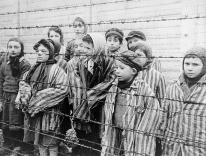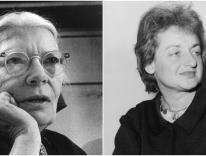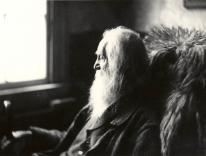Cormac McCarthy is one of our best—if least known—writers. In this, his fourth novel, he uses the archetypal journey to discuss important spiritual themes. He is primarily interested in the origins of evil; the search for redemption; the meaning of our brutal existence.
Although his latest novel deals with the relatively simple characters of three adolescents—Cole, Rawlins, Blevins—who light out for the unknown territory of Mexico to find their mixed fortunes—the year is 1949—he is less interested in their characterizations than in their spiritual recognitions. The plot involves various adventures, misfortunes, coincidences. It is, for the most part, merely an excuse to look for epistemological answers. On one level the novel resembles the traditional initiation we find in Huckleberry Finn or, for that matter, in Faulkner’s The Reivers. (The novel seems particularly "American" because of its underlying structure; it is our kind of adolescent picaresque.) But on a second (and deeper) level it is an occult narrative of the ultimate meanings—if there are any—of these adventures. There are echoes of a religious quest, a trip to discover the Holy Grail.
McCarthy’s imagery is, perhaps, more important than his characterization. (It is, of course, difficult to separate the two.) The imagery is one of hovering presences, secret omens, perverse signs. I quote at random: "it was like looking through something and seeing its heart." Another passage on the nature of earth-bound horses: "Lastly he said that he had seen the soul of horses and it was a terrible thing to see. He said that it could be seen under certain circumstances attending the death of a horse because the horse shares a common soul and its separate life only forms it out of all horses and makes it mortal. He said that if a person understood the soul of a horse then he would understand all horses that ever were." Cole leaves Mexico; his exit is described in poetic terms. "After a while he pulled his hat down over his eyes and stood and placed his hands out- stretched on the roof of the cab and rode in that manner. As if he were some personage bearing news for the countryside. As if he were some newfound evangelical being conveyed down out of the mountains...." These examples are visionary, mystical, ghostly. They suggest that there is another world which somehow influences ours. They, indeed, offer a sense of incarnation.
McCarthy’s language ranges from the laconic conversations of the three adolescents—even these conversations seem to hold ambiguous “presences"—to the almost biblical cadences of the following passage. "He thought that in the beauty of the world were hid a secret. He thought the world’s pain and its beauty moved in a relationship of diverging equity and that in this head- long deficit the blood of multitudes might ultimately be exacted for the vision of a single flower."
I assume that this brilliant novel will force readers to view McCarthy as an original stylist, as one of the best contemporary writers. It will, indeed, assume its place as an example of the great religious novels written by any American. It will, without doubt, disturb us by its violent juxtapositions of beauty and blood, "prettiness" and terror.
Please email comments to [email protected] and join the conversation on our Facebook page.
Previous Story
On the Clock
Next Story
Old Motifs Made New


